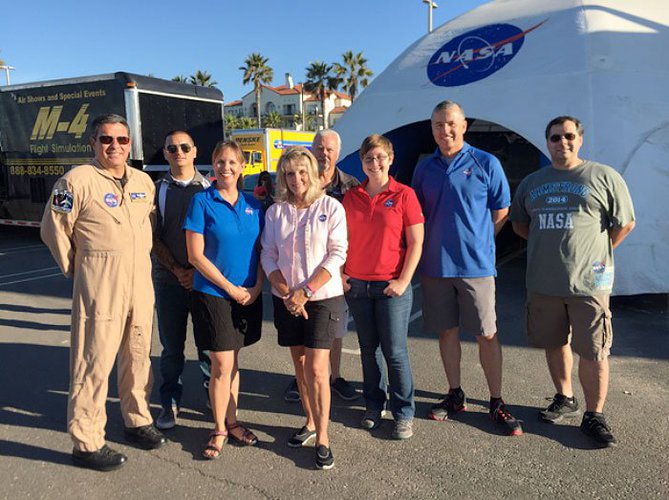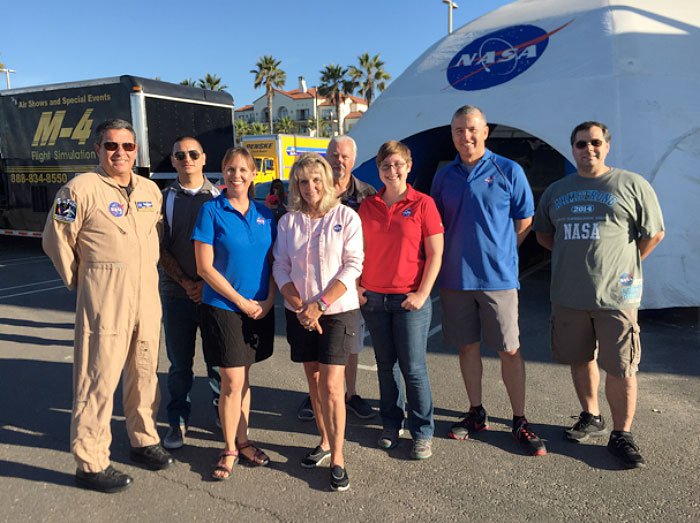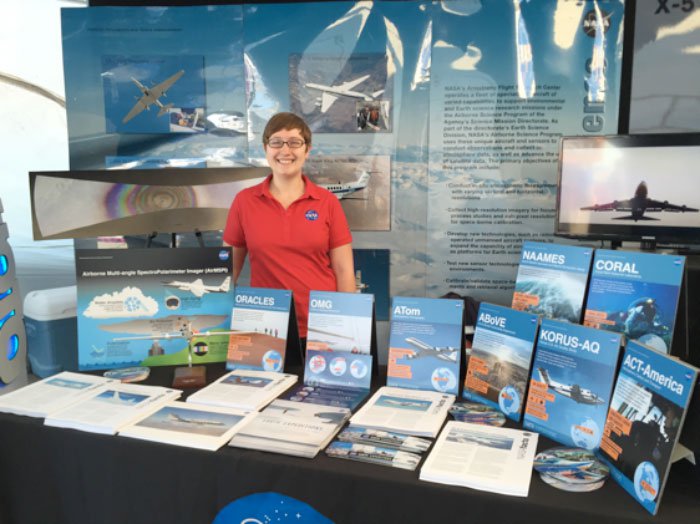AirMSPI Participates in NASA Exhibitions at Local Air Shows

NASA personnel outside the exhibit at Huntington Beach on October 22. From left to right: Manny Antimisiaris (SOFIA pilot), Henry Agustin (Armstrong), Susan Bell (JPL), Mary Ann Harness (Armstrong), Steve Lighthill (Armstrong), Abigail Nastan (AirMSPI at JPL), Mike Thomson (Armstrong), and Oscar Mejia (Armstrong).
On October 22 and 23, Abigail Nastan and Gerard van Harten of the AirMSPI team at the Jet Propulsion Laboratory participated in the inaugural Breitling Huntington Beach Air Show. Along with colleagues from JPL and NASA’s Armstrong Flight Research Center at Edwards Air Force base in California, the AirMSPI scientists spoke about NASA’s current and future role in aviation and answered questions from the public. The air show attracted 250,000 attendees on Saturday, and almost as many on Sunday despite rainy weather. The event included performances by the Air Force Thunderbirds, the Breitling Jet team, and numerous other aerobatics performers. NASA featured an extensive exhibit including models and videos of experimental aircraft and appearances by some of NASA’s Airborne Science pilots.
The AirMSPI instrument is part of NASA’s Airborne Science program, which seeks to study Earth and develop new instruments through the use of aircraft. AirMSPI flies on the ER-2 high altitude research aircraft, which is a civilian version of the U-2. The ER-2’s maximum recorded altitude is 68,700 feet, more than twice the standard cruising altitude of most commercial aircraft. AirMSPI is a sophisticated camera that studies aerosols, including water droplets in clouds and air pollution, in Earth’s atmosphere. The instrument is a follow-on to the Multi-angle Imaging SpectroRadiometer (MISR) satellite instrument and also functions as a development platform for the recently funded Earth Ventures Instrument mission Multi-Angle Imager for Aerosols (MAIA), a satellite instrument that will provide detailed aerosol data for health studies on the impacts of air pollution. On October 15, Felix Seidel of the AirMSPI team represented the instrument at the San Gabriel Valley Airport Air Fair, an annual event held at the airport where the Caltech/JPL Flying Club is based.

